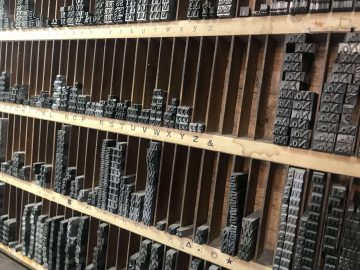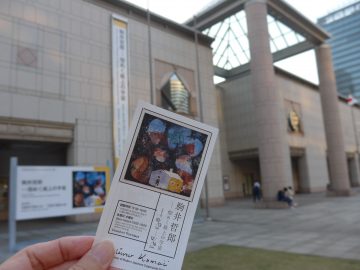Interview with Kunio Sugihara | Kanagawa Classics Project 2015 in Oyama

Interview & Text: Akiko Inoue Photo: Masamasa Nishino
The Kanagawa Classic Project, which was launched in 2013 with the aim of allowing many people to experience the charm of traditional performing arts rooted in the region, is holding its third event, and this time, the next-generation director Kunio Sugihara will be the general director, and a spectacular entertainment show that remixes tradition and history will be held at Oyama in Isehara City, Kanagawa Prefecture. On a certain day in October, less than a month before the performance on Saturday, November 7th, we were able to talk to Sugihara about the project.
Who is Kunio Sugihara?
- As for the "Kanagawari Classic Project," this year's stage is Oyama, so following the flow of the interview from last year's Enoshima edition, I would like to ask Mr. Sugihara to start with a self-introduction. Could you please give a brief self-introduction so that people who don't usually watch theater can understand?
Where should I start?
I was born in Tokyo, but when I entered elementary school, we moved to Chigasaki, where my grandparents lived. I grew up near the sea in Chigasaki for about 12 years, and went to Kamakura High School, which is on the Enoshima Electric Railway line, for high school. There were a lot of school events there, and even though I had been studying seriously up until then, I suddenly got bored and became obsessed with school events. There, I discovered the joy of creating something together toward a common goal, like at a school festival, and I thought it would be nice to do something like that, which is what led me to pursue a career in theater.
- So at that point it was already a stage production.
That's true. But my mother loved ballet and Kabuki from an early age, so I often went to see them at Chigasaki Cultural Hall. I think that parental influence was also big.
Many Japanese directors of my generation are also playwrights, but I don't like writing compositions and I have no interest in writing words, so I don't really have the urge to write scripts (laughs). So I think it's quite rare for someone like me to only direct without writing plays. My interest in theater started with stage design.
- I thought it was unusual that your title is "director/artist," so that's where your roots lie.
That's right. In that sense, I think it's a bit unique.
So I've been working like that since I was 21, and it's been 11 years already this year? I guess that's about it?
Wow, almost a full circle! Full circle!
Ah, sorry for the loud voice...lol
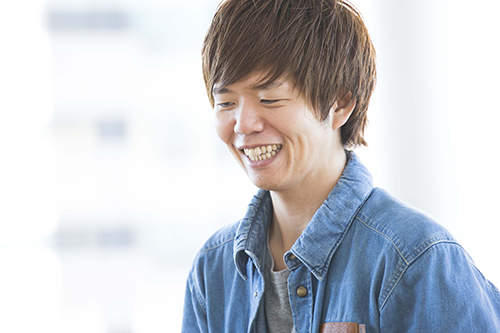
What kind of place is Mt. Oyama?
- You grew up in Chigasaki, but when did you first become involved with Oyama, the setting of this project?
That's not the case at all (laughs).
To be honest, when I was first told that we would be doing it in Mt. Oyama, I thought, "Where is Mt. Oyama?"... So, that was when I first went to check it out.
- What was your first impression at that time?
I had heard beforehand that there were a lot of hikers, but when I went for the first time on a weekday in March, the shops were closed, there were no people around, and I remember thinking it was a bit like a ghost town. But there was lots of nature and the air was fresh, so it was a really pleasant experience.
- I see! Just to add, when I went climbing Mt. Daisen recently, the cable car had just opened and it was autumn, so it was really crowded. I think that by the time the main event starts on November 7th, the leaves will be at their best, the air will be fresher, and the scenery will be even more beautiful.
That's right, the cable car was just renewed in October.
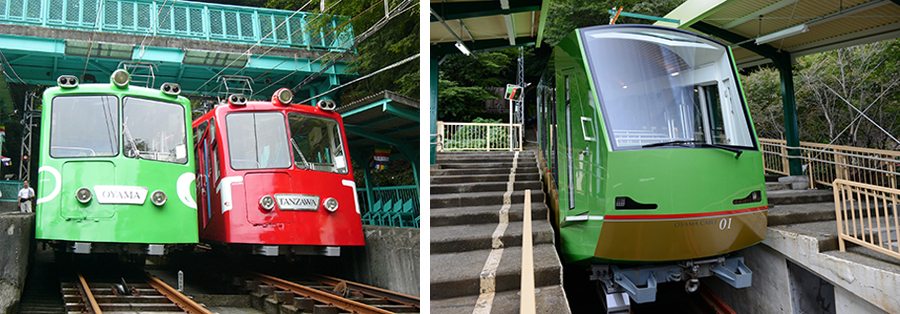
What is the Re-Classic Project 2015 in Mt. Oyama?
- Mr. Sugihara, you have done many challenging things in the past, such as creating a play with publicly recruited performers for the Kyoto Experiment's "Cultural Festival" and attempting to reconstruct classics from a modern theatrical perspective with Kinoshita Kabuki. This year's "Re-Classic Project 2015 in Oyama" will also be based on the theme of rediscovering classics from a modern perspective, and will feature collaborations with Japanese dancer Fujima Ranko and local traditional performers, so I think it will be a very fresh troupe. When I heard that Mr. Sugihara would be directing it, I personally thought he was a great fit. What do you think about that?
Thank you. I have created many works through public entries up until now, including a play with 30 seniors over 60 years old. I have done a lot of things like that, and this project is also something new, but I don't feel that nervous about it. But I think the biggest challenge for me this time is that the venue is outdoors.
A lot of people have told me for a long time that "outdoor performances would suit you." But anyway, it's very difficult, so I thought it would be better to do something interesting in a theater instead. But, since I've been given this opportunity, I'd like to do something new. Because there are a lot of things that are unpredictable outdoors...
- That's right. Unlike a theater, the movement of people outdoors varies, and it is also affected by the weather. This time, the project is taking place in a very wide area from Isehara to Oyama.
Yes. The scope of how you direct the audience's concentration is different from that of a theater, so it's a big challenge for me and something I'm really looking forward to.
The long-standing mountain of Mt. Oyama will be transformed into a gigantic club! Find out more...
- I have a strong image of you as someone who has directed original works with your own interpretation, such as "Hamlet" (Shakespeare) and "Vacant Lot" (Ota Shogo) with your company KUNIO, and "Sannin Kichisa" (Kawatake Mokuami) with Kinoshita Kabuki, but this time you will be creating an original work based on the historical fact of the "Oyama Ko" (※1) who make pilgrimages to Afuri Shrine at the top of Mt. Oyama, which was once a place of longing for the people of Edo, so I am looking forward to seeing a different side of you than usual. Please tell us your impressions at this stage, less than a month until the performance.
*1: A group of fellow tradesmen and local residents organized for the purpose of making the Oyama pilgrimage. In the mid-Edo period, when the Oyama pilgrimage was all the rage, Oyama ko groups were organized in various regions, and people came to Oyama from all over the Kanto region. It is said that at that time, the total number of Oyama ko groups was as many as 700,000 people.
This time, we will be dealing with traditional performing arts such as the performing arts that have been handed down in various parts of Kanagawa and the Fujima School of Japanese Dance, so if we just list the names, the audience will tend to feel like they are "studying". At the core of my activities is the idea that it would be nice if watching a play, going to Disneyland, and going to karaoke could all be the same leisure activity, so I would like to break that down first.
- Actually, I had the opportunity to read the newly completed draft of the script, and I thought it was really interesting.
The play is set up so that the characters in the play and the audience can simultaneously witness the traditional performing arts unfolding on stage, so I think that on the day of the performance, the audience will be able to experience the sense of being part of the play. If you don't mind, could you explain the content to me without giving away any spoilers?
The basic story is about four young people who come from Shibuya dressed as "Oyama Ko" (members of the Oyama sect), a group that was popular during the Edo period, believing in the superstition that "if you go to Mt. Oyama, any wish will come true." Through the various encounters they have there, they come to witness with their own eyes the prayers and wishes of countless people that have accumulated on the mountain since the Edo period...and even earlier.
Traditional performing arts are also built on accumulated knowledge, but we often only think about the present. However, I think we should not forget that the society we live in today exists because of the accumulation of various history, efforts, sweat, human activities, and many other things. That being said, I don't want to make it into a morality play, so I hope to be able to convey that message in a natural way.
Also, the performance will be held in a venue that can accommodate 800 people, so it would be great if we could create a festive atmosphere throughout the venue that brings together so many people at Mt. Oyama.
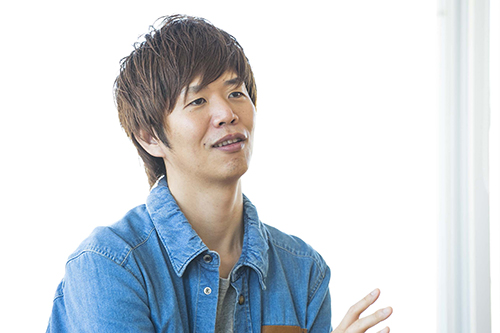
Collaboration with traditional performing arts
- During the play, five traditional performing arts groups (Oyama Afuri Shrine's Yamato Dance and Miko Dance, Sagami Sato Kagura, Sagami Sasara Dance, Soga Bessho's Kotobuki Lion Dance, Fujisawa Tobishoku Kiyari) and Japanese dancer Fujima Rankou will appear and show off their respective arts. Can you tell us about performing with them?
I spoke with each of the local traditional performers once and watched them rehearsing, but I think it's impossible to tell the whole story of, for example, the "Sagami Sasara Dance," including its history, in a 1.5-hour play. But I thought that if you could actually see the faces of the people who are carrying on the arts and convey even a little of their charm, it might be possible to create an opportunity to spark interest, so I plan to have them not only perform their art, but also appear in the play in various ways.
- I see, that's something to look forward to. Also, how is the collaboration with Fujima Rankou going?
Just yesterday, I went to see Ranko-san and Ruzimatov's ballet performance "Encounter - Nobunaga NOBUNAGA" and had a chance to talk to them a little. They are very flexible people, and I think they could make a good collaboration. At the ballet performance yesterday, each of them had a solo before the main performance, and at that time, Ranko-san danced a short version of "Going Back from the Mountain," which will be performed at Mt. Oyama this time.
- "Yamagaeri" is a dance that depicts the journey back from the Oyama ko pilgrimage to the summit. What did you think when you saw it for yourself?
It's a very simple dance, but each and every movement has a clear meaning, and I felt like it told a story, so I thought it was amazing. At the "Kanagawari Classic Project 2015 in Oyama," we can see this "Yamagaeri" in Oyama, where the dance is actually performed, so I think that's also a very rare opportunity.
- That's exactly right. And what's more, does this "return from the mountain" end up being the finale of the play?
That's right. Also, this time I'm thinking of making the whole venue into a giant club, and I'm currently having someone make a club version of Sagami's Sasara Odori dance, and I hope that with that song I can become one with the audience at the venue.
- So, does that mean we all dance at the end?
Yes, Momoko Shirakami, who was the general director of the Enoshima edition last year, has come up with some easy choreography that can be done while sitting down. Also, we will be handing out glow sticks called "cyalume" to everyone, and in the end, I hope that the wishes of each and every visitor will be entrusted to the mountain.
- It seems like it's going to be a really epic play.
That's right. I was feeling really down just talking about it (laughs).
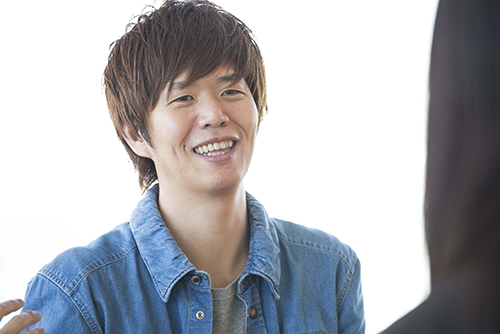
- No no, I'm looking forward to it (laughs)
Finally, could you please say a few words from Sugihara to the customers who will be coming on the day?
Of course, you can research various things beforehand, but even if you don't research anything, it's fine to come just thinking, "This seems like an interesting event," or "It's like a festival and looks fun," or "It's free, so I might as well go." I think it will be a success if you can find even just a few interesting, interesting, or intriguing points in the entire program of the Kanagawa Classics Project 2015 in Oyama, so please come and have fun without thinking too hard. It's not a "study session," but rather we want to have fun and create a fun time.
- Thank you. As an aside, in a 2010 interview (link), you said that you wanted to direct a local festival someday. I guess this dream has come true in a way.
That's right (laughs). I wanted to produce a local festival, something like the "Oyama Revitalization" festival.
- I hope you'll make the event even more exciting. Thank you for today.
"A model course for enjoying Kanagawa Classic Project 2015 in Mt. Daisen"
*Due to the large number of applications received this time, entry to the main program "Oyama Maude Maiodori" will be in the order of ticket numbers. Tickets will be distributed from 13:00 at the venue reception (Oyama Afuri Shrine Office), so please bring your admission ticket (a printout of the postcard or email notifying you of your winning). If you have an admission ticket, you can enter without a ticket, but you may have to wait as you will be admitted after all ticket holders have entered. We appreciate your understanding.
11/7 (Sat)
<The road to the dance at Mt. Oyama>
Exit the ticket gates at Isehara Station on the Odakyu Line and turn right.
▽
▽
Go down the stairs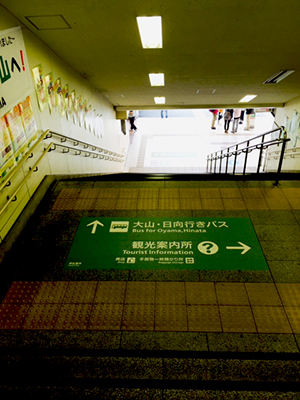
▽
▽
Continue to Isehara Station North Exit Bus Stop No. 4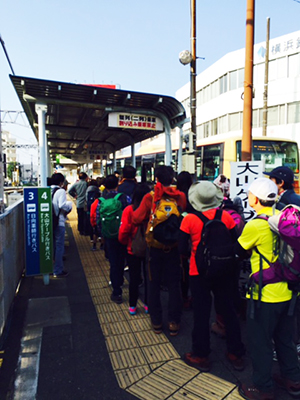
A map and program for the "Re-Classics Project in Mt. Oyama 2015" is available for distribution near the bus stop.
※MAP can also be downloaded from here → Page 1 , Page 2
▽
▽
Take the bus bound for "Oyama Cable" for 25 minutes and get off at "Oyama Station" bus stop.
From 2:00 p.m., you can enjoy the "Isehara-Oyama Switch" by Switch Research Institute in this area.
There are various attractions within a 10-minute walk, so be sure to try and complete them all.
*Switch Research Institute = A short 3 to 30 second play in which "something" happens when you press a "switch."

Photo: Tama 1km Switch
▽
▽
15:30
The performance of "Oyama Maude Maiodori" will begin at the Afuri Shrine Noh Theater .
*The venue is not the Oyama Afuri Shrine Shimosha, the final stop of the Oyama Cable Car, but the Shrine Office, about 700m before the Oyama Cable bus stop. (On Google Maps, it is shown as Oyama Afuri Shrine Sanshuden Senshinkaku.) Please be careful not to make a mistake when visiting.

Afuri Shrine Noh Theatre
There will be food stalls set up at the venue on the day, so you can arrive early and spend the time before the show enjoying Oyama specialties.


